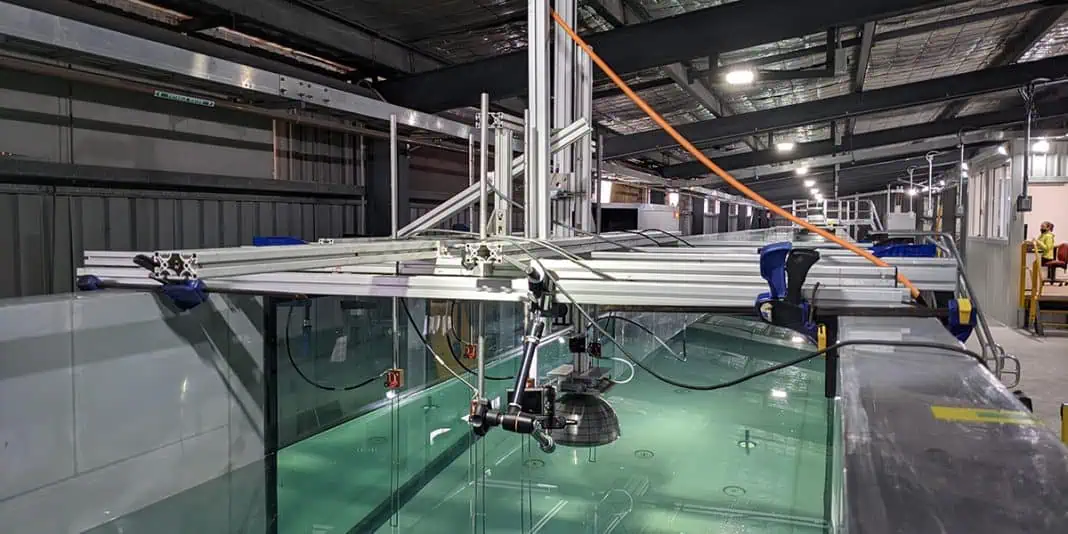Marine Energy Research Australia (MERA) is set to deliver an extensive study focused on wave energy hydrodynamics, to drive performance, reduce cost and accelerate commercialisation.
This University of Western Australia research centre is joining forces with Swedish wave energy technology developer CorPower Ocean and industry partner Australia Ocean Energy Group (AOEG) to deliver the work.
Funding has been secured through the Australian Research Council’s Linkage Project scheme, which recently awarded more than $40 million to 81 projects performing collaborative research in a wide range of fields to transform industries and strengthen the Australian economy.
Uniting leading expertise from across industry and academia, the project aims to harness a unique combination of numerical, laboratory and field data. This includes operational data from CorPower Ocean’s first full scale wave energy deployment taking place in northern Portugal, through the HiWave-5 Project.
Senior Research Fellow at the University of Western Australia (UWA) Hugh Wolgamot said the intensive research will help address a fundamental issue for wave energy – modelling how high-performance WECs interact with the ocean.
“Scientifically, the guiding principles of wave energy have been clear for some time, with resonance between the waves and the WEC motion enabling maximum power absorption,” he said. “In this project we are partnering with CorPower Ocean, a leading WEC developer, whose ingenious negative spring mechanism represents perhaps the purest realisation of these principles. Our ultimate goal is to maximise the amount of energy captured and converted by these WECs from the ocean environment. To achieve this, we will combine world-class hydrodynamics expertise with detailed insight from full-scale operations, to develop novel numerical models which accurately represent wave forces exerted on the WECs. By focusing efforts on performance in moderate seas, which occur most frequently, we will identify ways to boost hydrodynamic performance, increasing overall efficiency and driving down cost – which is paramount to enabling large-scale utilisation.”
The first phase of the project involves lab experiments through high-precision model-scale wave flume experiments. These are designed to isolate nonlinear dynamic features through careful post-processing and analysis of the data. A second phase will focus on numerical model development, informed by the laboratory measurements. The third and final phase will see new hydrodynamic models carefully validated against full-scale field measurements, comparing WEC simulations with CorPower Ocean’s fully instrumented ocean deployment.
CorPower Ocean Lead Scientist Jørgen Hals Todalshaug said numerical modelling underpins much of wave energy engineering, and new advances in the field will play a key role in driving down technology costs.
“This project will deliver new numerical models specifically concerning critical nonlinearities from large amplitude WEC motions,” he said. “While there has been progress in this area, the different nonlinear effects and their treatment have not been systematically investigated and fully validated. As there is no standard method to account for these force components in an accurate way, the outcomes of this Linkage Project will be of profound interest to our industry.
“The vast majority of numerical model advancement is undertaken by the academia field alone. However, the collaborative nature of this research project drawing in industry, combined with the ability to test alongside a full-scale WEC deployment, enables us to operate at the sharp edge of innovation.”
CorPower Ocean’s HiWave-5 project is the result of a decade of structured product development and four decades of research on wave hydrodynamics. It marks a final push towards commercialisation as part of a broader mission to make wave energy competitive with wind and solar by 2030.
Australian Ocean Energy Group General Manager Stephanie Thornton said the new Linkage Project plays into the organisation’s broader strategic effort to shift the industry paradigm from ‘technology push to market pull’.
“AOEG, was established in 2018 to accelerate the nation’s response to climate change,” she said. “Our work focuses on decarbonising Australia’s Blue Economy by building demand, where none previously existed, for rapidly emerging ocean energy technology. As such, we recognise the huge importance of research efforts like this latest Linkage Project, specifically addressing areas such as WEC efficiency and cost. This sort of work is crucial if we are to bridge the gap between technology development and end-users and attract the necessary investment and interest. We look forward to communicating the findings of this innovative project to our extensive international network propelling ocean energy across the Australia Pacific region.”













